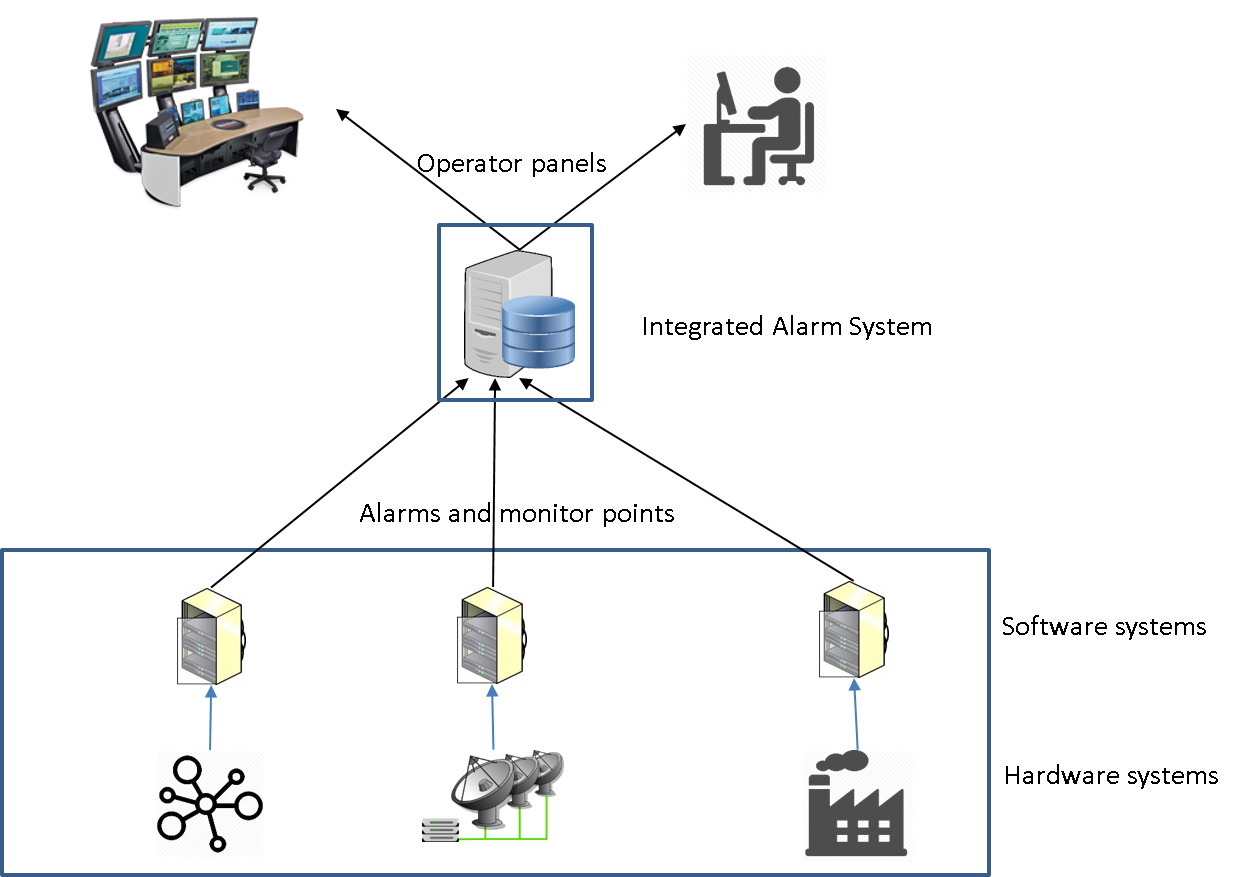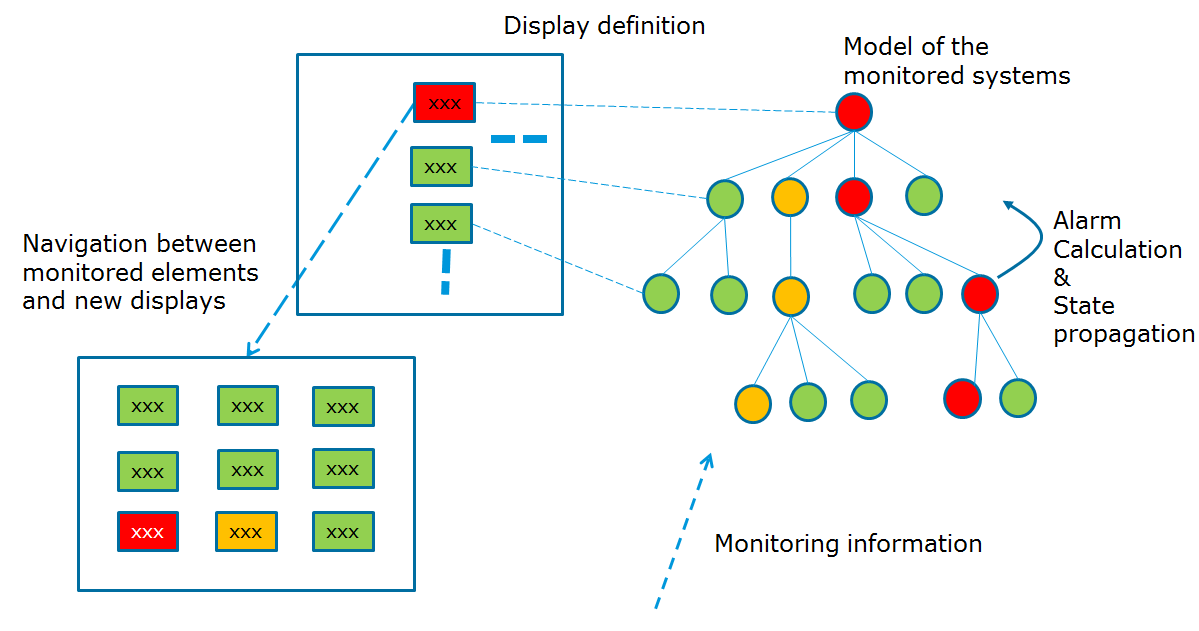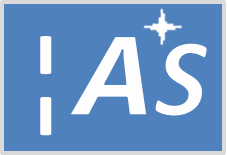This video prepared by Grazia Prato (Inria Chile) shows the Integrated Alarm System (¦AS) GUIs developed for the ALMA observatory.
The Integrated Alarm System (¦AS) is a software tool whose main purpose is to get alarms and monitor points from different sources and generate alarms to present to the users who can range from operators in the control room, up to engineers sittings at their desks. The alarm system is a message passing facility that routes information about abnormal situations detected from hardware or software to the user in an easy to understand format. The purpose of such tool is to increase the situation awareness of the audience and help understanding the root cause of a chain of problems in order to minimize the reaction time and improve the overall efficiency of the facility.
An alarm system is a basic operator support system for managing abnormal (also called non-nominal) situations and it has the following two functions:
- To warn the operator about a situation that is not normal; alarms must be relevant to the operator’s role at the time, indicate what response is required, be presented at a rate the operator can deal with, and be easy to understand.
- To serve as an alarm and event log, which can be used for an analysis of incidents and to optimize operations.
The alarm system must provide useful information and functionality to support the operators’ tasks. Information must be presented and handled in a way that is compatible with human capabilities and limitations, so that the alarm system remains usable for the operators in all situations.

During a preliminary investigation, it became clear, in particular from ESA alarm system, that a system that simply presents alarms without any visual context information will not be suitable to satisfy the needs.
It has been identified that the best representation will be based on high-level status displays of the inherently hierarchical system, with drill-in capabilities to identify the root cause and appropriate action to be taken for any abnormal situation.
Simple, self-explanatory and above all consistent color coding and audio-visual effects will be used to draw the operators’ attention to problems and assist them in taking the appropriate action.
In agreement with ESA experience with their alarm system, we have found that the architecture of the ALMA observatory is inherently hierarchical.
To provide useful information to the operators, such hierarchical structure must be implemented in the alarm system.
The picture below, kindly provided by ESA, shows at the left side, the hierarchical structure of the displays provided to the operators and their relation with the model of the monitored system, at the right side.

¦AS is currently developed at the European Southern Observatory for the Atacama Large Millimiter/Submillimiter Array observatory but it can be used in association with any distributed software system. Its architecture is freely inspired to the European Space Agency alarm system for the ground based telescopes.
 The source code is released under the LGPL license.
The source code is released under the LGPL license.
Latest release is v13.1.5
Contributing
Anybody is very welcome to contribute to the development of the Integrated Alarm System in the way he/she prefers. If interested, read the contributing page in github.IAS Core documentation
The core of the Integrated Alarm System is composed of several modules, ranging from retrieving of data from the different systems to processing of Alarms. The documentation of the core is in the wiki pages.API documentation of the latest release v13.1.5
IAS Display documentation
This is the user interface to display and interact with alarms. It is built using Angular 4 framework.IAS Webserver documentation
This is the web server that supports the IAS Display. It is used to receive and persist alarms received from the IAS Core and communicate them to the IAS Display. It is built using the Django-Channels framework.Documents and papers
¦AS documentation is maintained in the wiki. Other interesting documents are listed below.- ICALEPCS 2017, The Integrated Alarm System of the Alma Observatory (pdf), (slides), (video)
- Documents presented at the meeting with Cherenkov Telescope Array (CTA) people held in ESO/Garching 12/12/2016
- Alarm system architecture
- Alarm system design
- Deployment pipeline proposal
Contacts
Erich Schmid is the project manager (@eschmid).
Alessandro Caproni (@acaproni) is the technical leader.
 Integrated Alarm System
Integrated Alarm System